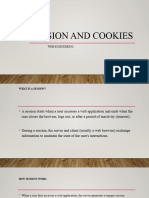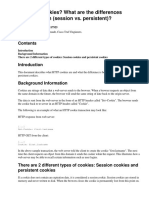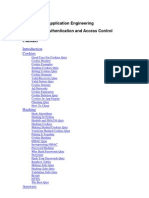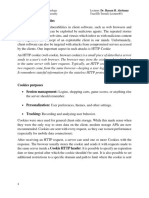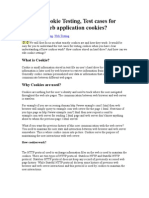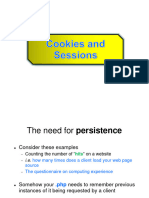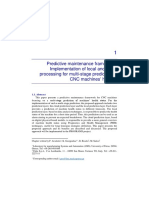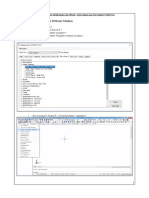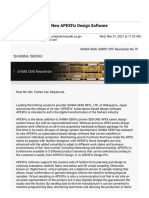0% found this document useful (0 votes)
20 views6 pagesHTTP Header and Cookie
A cookie is a small data storage mechanism on a user's browser that helps servers remember user interactions for a personalized experience. There are three main types of cookies: session cookies, which are temporary; persistent cookies, which have an expiration date; and third-party cookies, used for tracking across sites. HTTP headers facilitate the exchange of metadata between clients and servers, playing a crucial role in managing requests and responses.
Uploaded by
Raaz gamingCopyright
© © All Rights Reserved
We take content rights seriously. If you suspect this is your content, claim it here.
Available Formats
Download as PDF, TXT or read online on Scribd
0% found this document useful (0 votes)
20 views6 pagesHTTP Header and Cookie
A cookie is a small data storage mechanism on a user's browser that helps servers remember user interactions for a personalized experience. There are three main types of cookies: session cookies, which are temporary; persistent cookies, which have an expiration date; and third-party cookies, used for tracking across sites. HTTP headers facilitate the exchange of metadata between clients and servers, playing a crucial role in managing requests and responses.
Uploaded by
Raaz gamingCopyright
© © All Rights Reserved
We take content rights seriously. If you suspect this is your content, claim it here.
Available Formats
Download as PDF, TXT or read online on Scribd
/ 6









